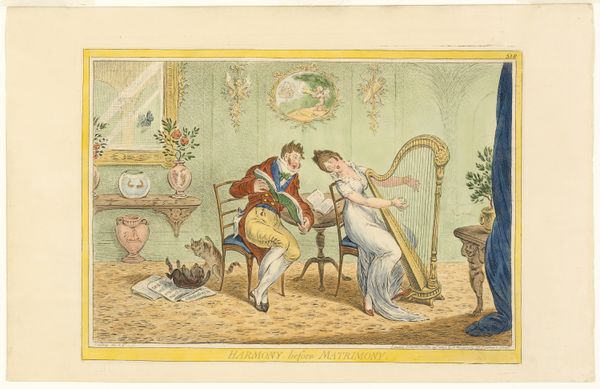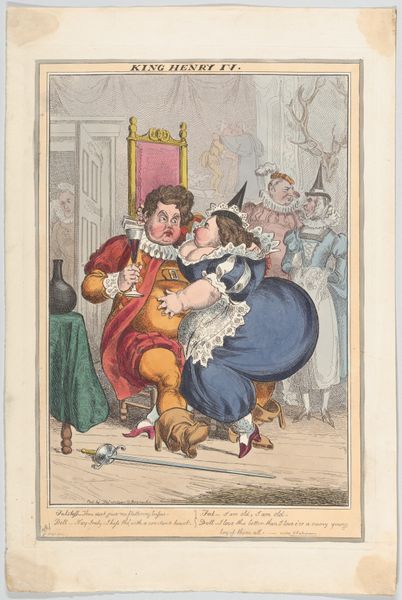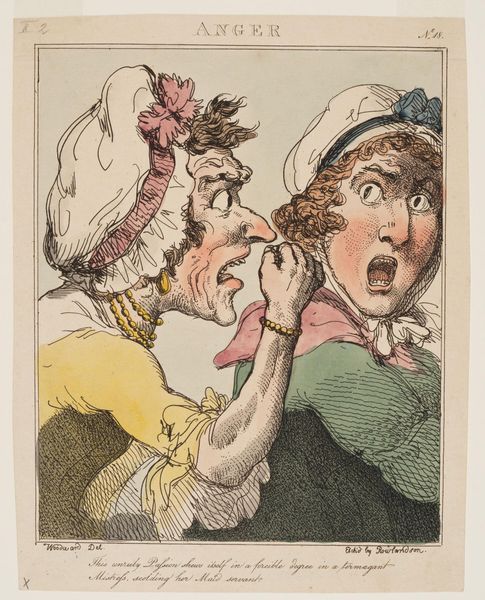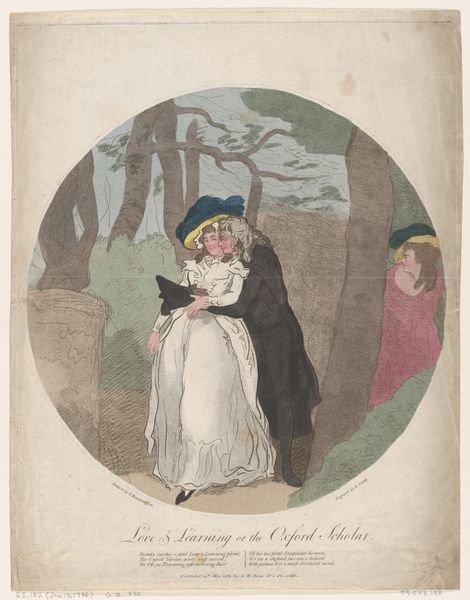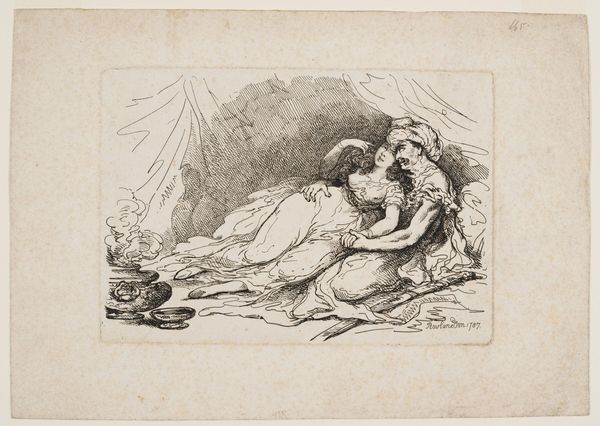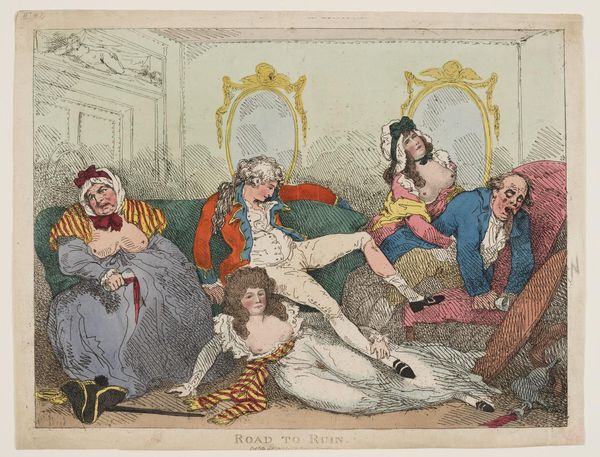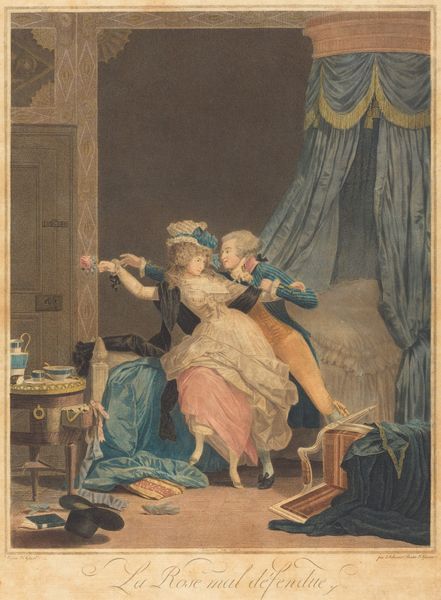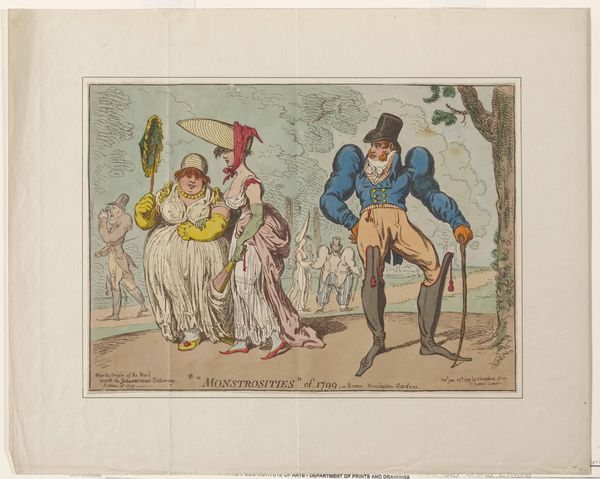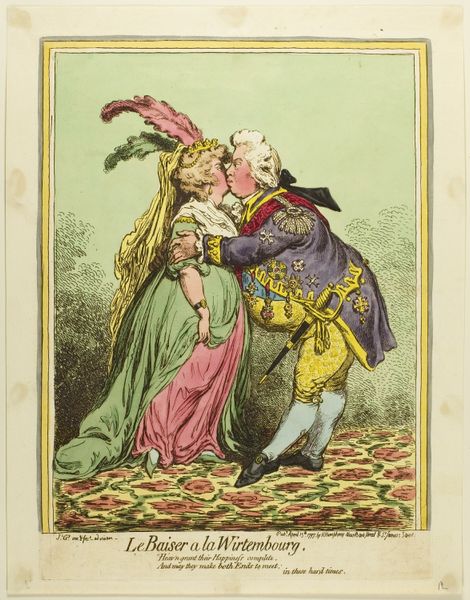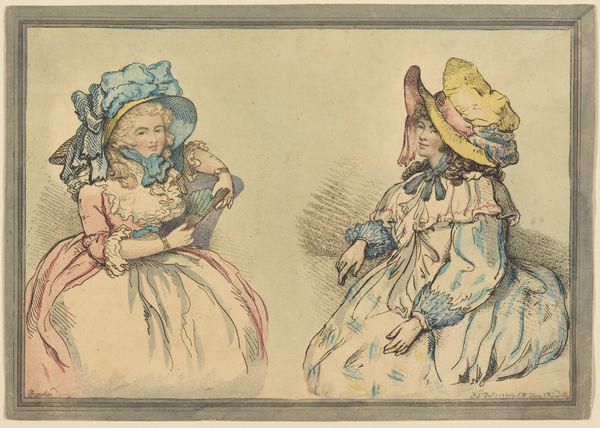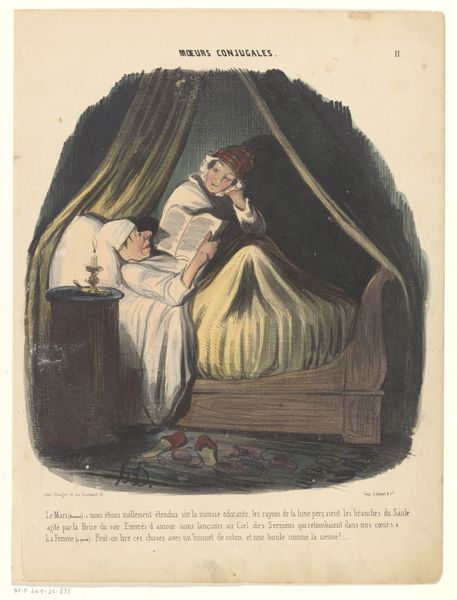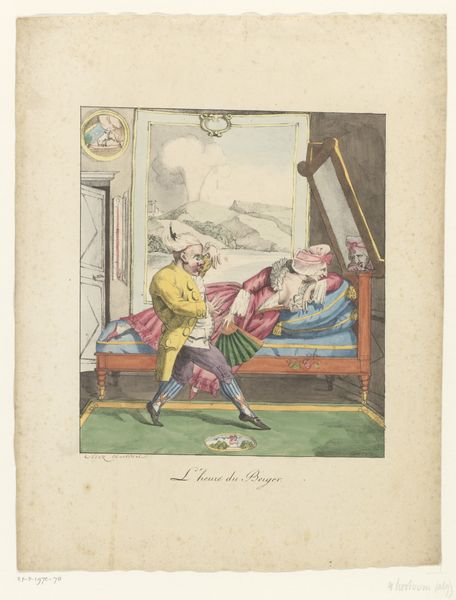
drawing, coloured-pencil, print
#
portrait
#
drawing
#
coloured-pencil
# print
#
caricature
#
coloured pencil
#
romanticism
#
erotic-art
Dimensions: Plate: 7 5/16 × 10 3/16 in. (18.5 × 25.8 cm) Sheet: 7 11/16 × 10 1/2 in. (19.5 × 26.7 cm)
Copyright: Public Domain
Curator: Here we have “General Jacko & his Rib,” a coloured-pencil drawing printed in 1800 by John Cawse. The piece resides here at the Metropolitan Museum of Art. Editor: Well, it's certainly… something. A rather risqué composition; is that a monkey in a military coat embracing a woman on a chaise lounge? The muted palette gives it a strange dreamlike quality. Curator: Dreamlike indeed. These satirical prints circulated widely, fuelled by social commentary and easily reproduced and distributed through printmaking. Cawse was commenting on the exotic, drawing parallels between humans and animals. Editor: So the artist saw something debasing or animalistic in this implied relationship. It’s more than just the subject; the quick, almost frantic hatching with coloured pencil exaggerates every form, turning human and animal alike into distorted parodies. The materiality speaks to an urgency, a need to express biting social commentary without refinement. Curator: Exactly. The means of production allowed this kind of unfiltered expression to reach a wide audience. And consider the title: 'his Rib'. It points directly to the labor dynamics involved in representation and possession, while reducing humanity to raw flesh. How are such concepts being consumed? What impact did these accessible prints have on public opinion, fueled by their subversive material properties? Editor: Beyond the content itself, I notice the diagonal composition – how the figure reclines across the space. Then, see the formal structure underlying it. The careful arrangements in the background. Look at how Cawse directs the viewer’s eye with compositional lines. Curator: Yes, there is a composition but that only serves to render a starkly suggestive narrative, pushing back on idealized portraiture that might conceal the crude realities of gender roles. Think about who consumed these prints and how access affected production and demand. Editor: I understand that this caricature aims to mock societal figures. As we wrap up, my final thought lies with how the artist uses formal qualities of lines and tone not merely for documentation, but for instilling certain emotions in us. It gives us cause to analyze underlying human experiences through abstract notions such as line work alone Curator: And that initial production and audience consumption. That's crucial to understanding art as something woven from a place, moment and purpose, and that meaning doesn't live solely in lines or shading, it lives in hands, hearts, societies that shape it into existence and ingest it.
Comments
No comments
Be the first to comment and join the conversation on the ultimate creative platform.

